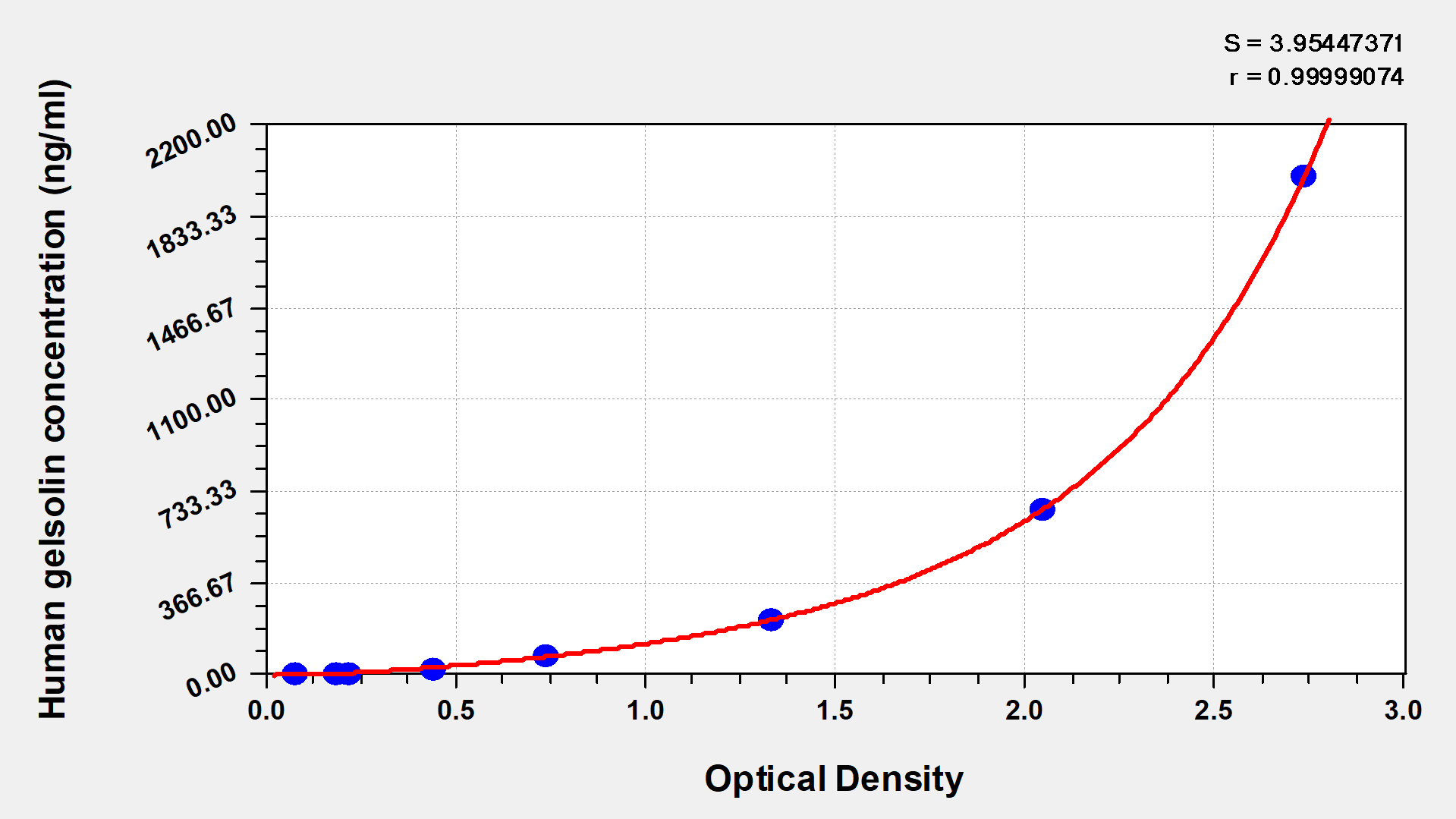The Human Gelsolin (GSN) ELISA Kit quantifies GSN in human serum, plasma, or tissue homogenates. It is not intended for diagnostic use. This assay kit was designed and optimized for metabolic research use in humans. The kit has undergone rigorous quality control in multiple parameters, including sensitivity, specificity, precision, linearity, recovery, and inter-batch difference. Refer to the product instructions for more details.
This assay employs the quantitative sandwich enzyme immunoassay technique, in which GSN in the samples or standards are sandwiched between pre-coated GSN antibody and Biotin-conjugated GSN antibody. HRP-avidin is then added into the wells. Following a wash to remove any unbound reagent, the TMB substrate solution is added to the wells and color develops in proportion to the amount of GSN bound in the initial step. The color development is stopped upon adding the stop solution, and the intensity of the color is measured at 450 nm via a microplate reader. The levels of GSN in the samples can be determined by referring to the O.D. (optical density) of the samples to the standard curve.
GSN is an actin-binding protein (ABP) involved in the regulation of actin filament assembly and disassembly. Plasma GSN can sever actin filaments and is beneficial for the body to recover from disease and injury that leaks cellular actin into the blood. GSN also plays important roles in host innate immunity, activating macrophages, and localizing inflammation. Evidence has been found that GSN exerts multiple functions in the modulation of physiological and pathological cellular processes. High GSN expression was detected in prostate cancer cells and was related to tumor progression, recurrence, metastasis, and poor prognosis.






